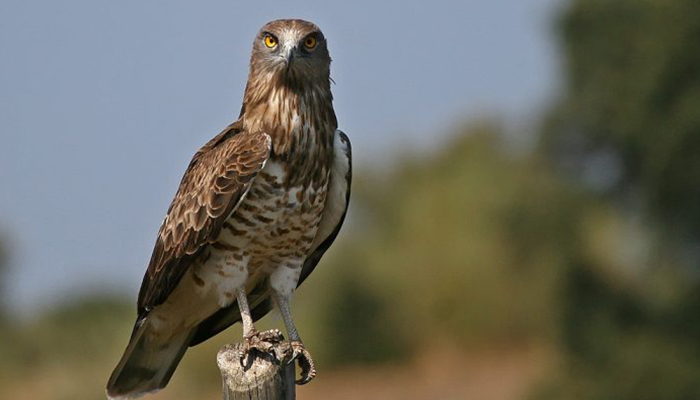
English: Short-toed Snake Eagle, Short-toed Eagle, European
Snake-eagle
Russian: Обыкновенный змееяд
German: Schlangenadler
French: Circaete Jean-le-Blanc
Mongolian: Могойч загалай, Лусч сар
Japanese: チュウヒワシ (Chuhi-washi)
Status: Very rare species. According to the
IUCN Red List categories and criteria, the species evaluated as-Endangered.
Distribution and Range: In Mongolia: it occurs along the south western part of Khentii
during breeding season. Breeds in the Selenge river valley, occurs in the
Orkhon, Selenge and Tuul Rivers valleys during migration passage. Zuun
Khailaastai, Shutegiin Bayangol, Ooshiin Govi of Tsogt-Ovoo Soum in Omnogovi
aimag, Bagmod and Galba Govi, Bataagiin River in Noyon Soum of Omnogovi Aimag.
Habitat: This is breeding visitor to Mongolia. Builds nest on Aspen and
Elm trees in Govi Desert. Migrates through open forest steppe, steppe and Govi
Desert.
Population and Threats: Population not assessed for Mongolia. Threats: nesting habitat
degradation from livestock, and especially camels grazing; developments
following mining and tourism activities, i.e., cutting down trees with nests
for firewood, making its nesting success very slim. Changes in native species,
loss of prey or food supply. Predators are threat, even a regular owl.
Conservation Measures: included as very rare animal in the Mongolian Law on Fauna,
included in the CITES, Annex II and CMS, Annex II, the Mongolian Red book
(1987, 1997). Approximately 11.9 % of this species range occurs within the
NSPAN.
Further actions: Study on distribution, reproductive biology and ecology; include
the distribution area within the NSPANS; improve conservation measures, reduce
habitat degradation, and raise awareness.